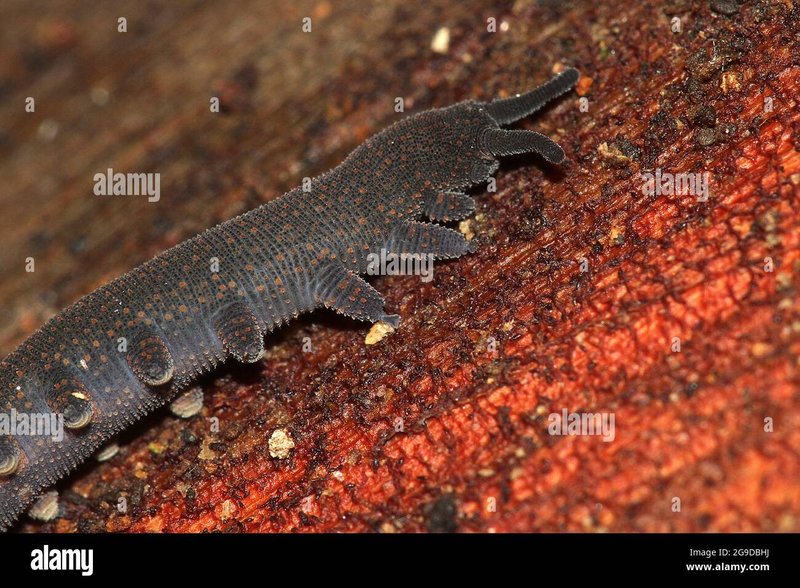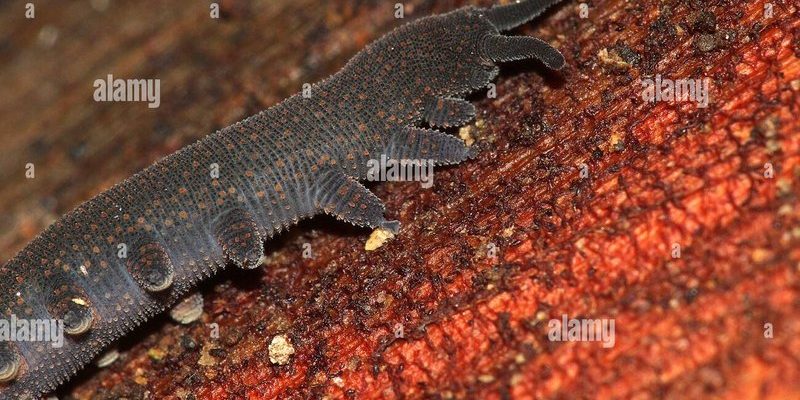
Velvet worms are beautifully weird, and they play a crucial role in the ecosystem. They’re known for their hunting techniques, using slime to trap prey, and they thrive in moist environments. Understanding whether they prefer decaying wood or fresh leaf litter can help us comprehend their ecological needs and how they interact with their environment. Let’s dig deeper into their habitat preferences and what that means for these creatures and the ecosystem.
What Are Velvet Worms?
To start off, let’s talk a bit about what velvet worms actually are. Also known as **onychophorans**, these soft-bodied invertebrates have caught the interest of scientists and nature lovers alike. Found mostly in tropical and subtropical forests around the world, these fascinating creatures can range in color from green to brown, helping them blend into their leafy surroundings.
Here’s the thing: they may look like something out of a science fiction movie, but they’ve been around for millions of years! They are often referred to as “living fossils” because their basic body design hasn’t changed much since the time of the dinosaurs. Their unique body structure features a series of small, fleshy legs that help them inch along their habitat, almost like they’re *gliding* rather than crawling.
These little guys are more than just quirky; they have some exciting adaptations. For instance, they can produce a sticky slime to catch their prey. Imagine using spider silk—only stickier! This skill is particularly handy when they’re hunting for small insects to dine on.
Velvet Worms and Their Habitat
Now that we have a basic understanding of what velvet worms are, let’s look at their habitat. Velvet worms love moist environments and are typically found in leaf litter and decaying wood within damp forest floors. The humidity and the organic matter found in these areas provide the perfect conditions for them to thrive.
But why moisture? Well, like many creatures that inhabit the forest floor, velvet worms are susceptible to dehydration. They have no hard exoskeleton to protect them from drying out, so they stay in damp spots. It’s why leaf litter, which retains moisture and provides cover, is so appealing.
Decaying wood also plays a significant role in their habitat. The decomposing material presents a buffet of nutrients and moisture, creating a mini-ecosystem that supports various life forms, including fungi and other microorganisms. All these factors combined make both decaying wood and fresh leaf litter integral to the lives of velvet worms.
Does It Really Matter? The Effects of Environment
You might be wondering why it matters whether velvet worms prefer decaying wood or fresh leaf litter. Well, understanding their habitat preferences helps us grasp the health of the ecosystem. A rich, biodiverse forest floor means that there’s a balance of life and decay, which is vital for nutrient cycling.
If we notice a decline in velvet worm populations, it could suggest that the forest is drying out or that the balance of life forms is off. For example, if too much of the leaf litter is being removed or the decaying wood is cleared away for timber, it can disrupt this delicate balance.
It’s a classic case of “everything is connected.” Decaying wood and leaf litter are not just homes for velvet worms; they support countless organisms in the ecosystem. Therefore, keeping these environments intact is essential for maintaining biodiversity in a forest.
Fresh Leaf Litter vs. Decaying Wood: What Do Velvet Worms Really Prefer?
So, let’s get to the heart of the matter: do velvet worms truly prefer one environment over the other? While both decaying wood and fresh leaf litter offer benefits, studies suggest that velvet worms are often found more frequently in decaying wood.
Why’s that? Decaying wood offers a stable and humid environment that can be easier for them to navigate. Plus, it contains a wealth of microorganisms they can feed on. Fresh leaf litter, on the other hand, may be more variable when it comes to moisture levels. It can dry out faster than decaying wood, especially during warmer months. However, the fresh leaf litter still plays a vital role, providing essential cover and additional moisture.
In essence, while they might *prefer* decaying wood, they can thrive in both environments. It’s all about availability and balance—they’re adaptable creatures that find ways to live in various conditions.
How Velvet Worm Habits Affect Their Survival
Understanding habitat preference doesn’t just illuminate velvet worms’ lifestyles; it also demonstrates their survival strategies. These worms are quite sensitive to environmental changes. For example, if a forest experiences heavy rains or prolonged dry spells, the moisture content of decaying wood and fresh leaf litter can fluctuate dramatically.
Additionally, human activities such as logging or agriculture can disrupt the natural balance of their habitats. If too many trees are removed, for instance, the resulting lack of decaying wood can lead to a decline in velvet worm populations. They rely on these habitats not only for moisture but also for food sources, as decaying wood often attracts other small critters they prey on.
Because of their sensitivity, velvet worms can serve as valuable *indicator species*. If they start to decline, it can signal that something is off in the ecosystem. Keeping an eye on their populations can help us understand broader environmental issues and guide conservation efforts.
In conclusion, velvet worms are remarkable creatures that add richness to our forest ecosystems. While they seem to prefer decaying wood over fresh leaf litter, they rely on both environments for survival. Their preferences reflect their need for moisture and the interconnectedness of forest life.
By appreciating and understanding the complexities of their habitats, we can do our part in preserving these fascinating organisms and their ecosystems. Whether it’s promoting sustainable practices or simply appreciating the unique inhabitants of our forests, every little effort counts. So, the next time you’re wandering through the woods, take a moment to consider the life teeming just below the surface, including the charming velvet worms.

